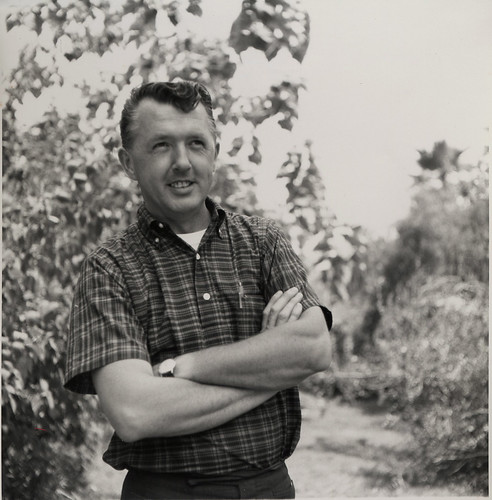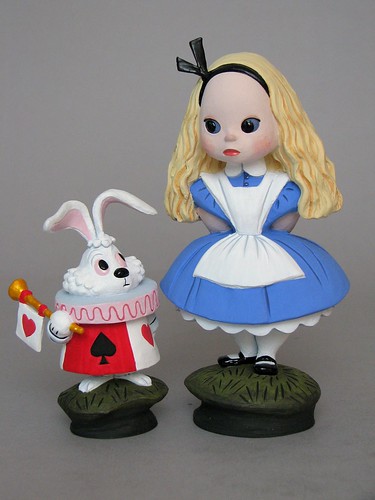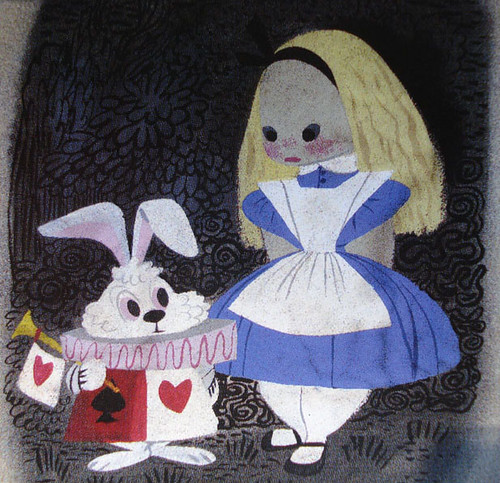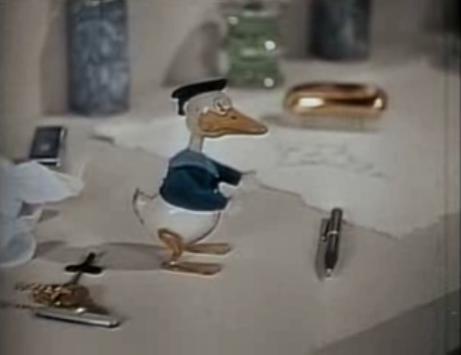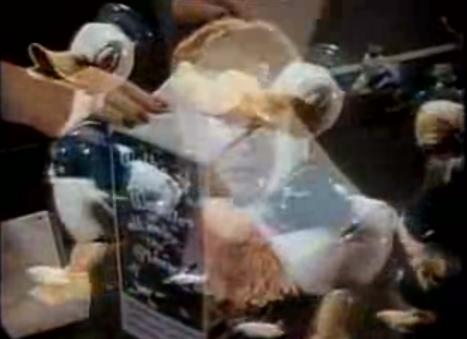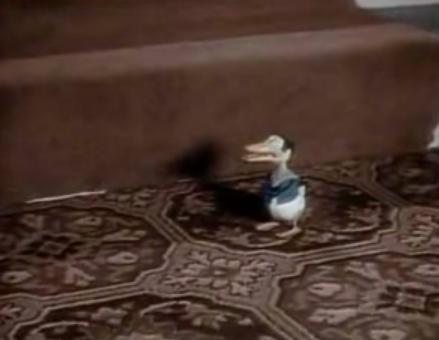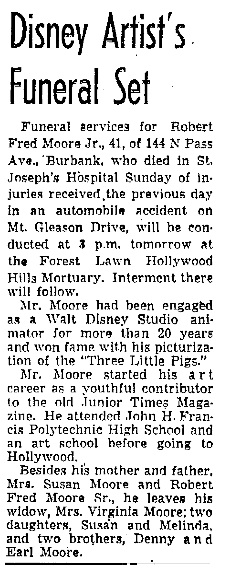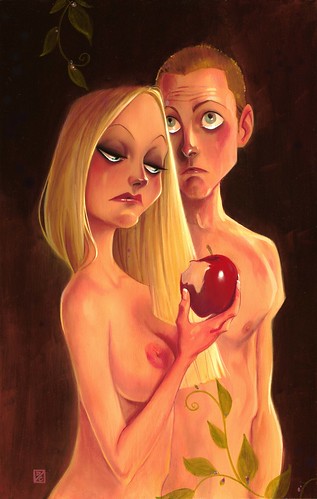
I really believed he'd live to be at least 100.
Andrew Wyeth, youngest of five children of N.C. and Carolyn Wyeth, died at home in Chadds Ford today. Not in the house he was born in, but much closer in distance and spirit than most of us probably will.
When I was little Wyeth's work was everywhere--it was ubiquitous. His "Christina's World" was featured in most books and magazines when "great American art" was covered. He was clearly famous, widely respected and hugely popular. And his work left me cold.
To me, it was too
dry(as it happens, the arcane use of dry-brush tempera was his most favored medium). From the subject matter of barns and fields to the handling the rough, scraped, impassive feel of his art left me with a general feeling of dispepsia. Obviously the technique was incredible, but it came across as obsessively pinched and somehow
sour to me.
Anyway, that was my superficial impression as a teenager. Later I came to look at his work very differently.
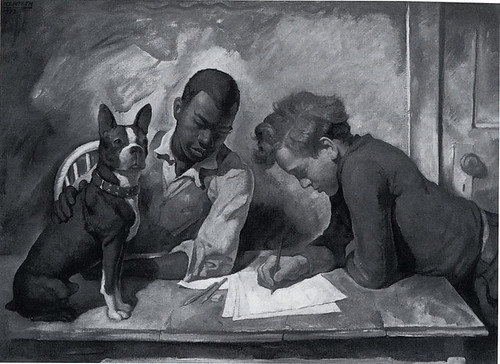 "Portrait of a Dog", a study of Andy Wyeth by his father N.C.. Age 15, he's here with his best friend, his dog, and engaged in his favorite occupation: drawing. It's a beautifully colored painting but unfortunately it's only been reproduced in black and white.
"Portrait of a Dog", a study of Andy Wyeth by his father N.C.. Age 15, he's here with his best friend, his dog, and engaged in his favorite occupation: drawing. It's a beautifully colored painting but unfortunately it's only been reproduced in black and white.I got to know Andrew Wyeth anew in 1986, as a result of a marvelous documentary that appeared as part of the PBS series "Smithsonian World":
"The Wyeths: A Father and his Family". If you can find a copy of this amazing documentary, get it and watch it. Every artist owes it to themselves to be immersed in it for an hour. It's spellbinding--and it made me reconsider the art of Andrew. I'd always loved N.C. Wyeth's work and I still do--in fact I appreciate it more as time goes on--but in the context of his amazing family and his incredible father, the approach that Andy Wyeth took to his own art became more understandable and multilayered to me. In addition, his watercolors were a whole other thing--the latter-day works, and most especially the vivid paintings he did at the very beginning of his career, barely out of his teens.
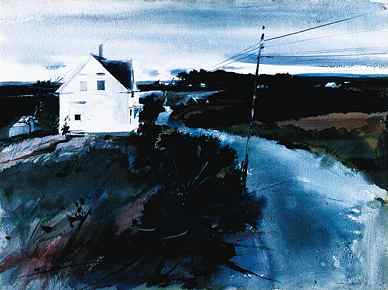 "The Road to Friendship" 1941, watercolor. Farnsworth Art Museum, © Andrew Wyeth
"The Road to Friendship" 1941, watercolor. Farnsworth Art Museum, © Andrew WyethBut again, it was the great influence that the Brandywine River valley had on the elder Wyeth that made me take that initial trip there, to return multiple times. The landscape had a spellbinding effect on the entire Wyeth family, and once you're actually there it's completely understandable. It's a haunting, lovely, mysterious area rich in history and inspiration. The Brandywine River Museum(a converted mill on the bank of the river) is devoted largely to once-local artists--most famous as illustrators: N.C., Howard Pyle, Dean Cornwell, Harvey Dunn and Jessie Wilcox Smith, among many others--almost all influenced either by Pyle or later by N.C. as students.
As a perfect compliment to the art, the house that N.C. built for his family and the adjacent studio where he painted most of his incredible works are open to the public most of the year--all except for those months when Andrew was using the property for his own daily work, as he was doing until very recently.
I wanted to mark the passing of Wyeth here because more than his own art, his life--the life his father made for him and the other children(Henriette, a painter; Nathaniel, an inventor and engineer; Carolyn, a painter, and Ann, a composer and musician)was full to bursting with an appreciation for the wondrous and inspiring in the everyday--the beauty. tragedy, and mystery of it. If you ever see the documentary or can read the very good biography of NC--or better yet, the collected letters of NC Wyeth that were published some 20 years ago--you'll be unable to get all of the Wyeths out of your mind. And the instruction and exhortations that NC pounded into his children are ones that I think all of us in our profession should take to heart. Andrew remembers his father telling him re: the world around him: "Andy, we [artists] must be like a sponge--
sop it up! soak it up! But be
sure-remember-to squeeze it out once in a while".
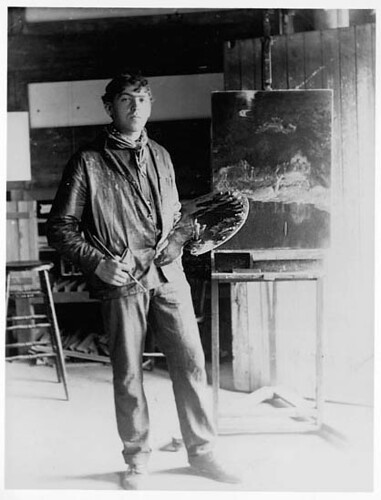 NC Wyeth in 1903
NC Wyeth in 1903

